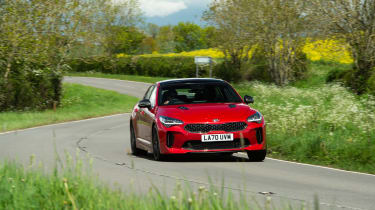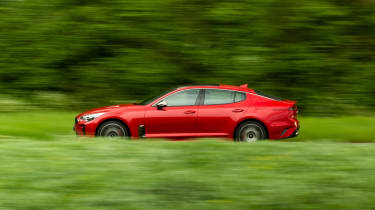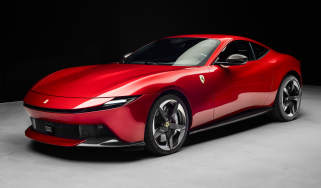Kia Stinger GT S (2017-2022) review – ride and handling
The handling is just as entertaining as before – a bit wayward, but engaging nonetheless
There’s something quite satisfying about the way the Stinger gets down a twisty road. While you have to account for its size, which chips away at the fun factor on smaller B-roads, the Stinger has the curiously old-fashioned feeling to its driving experience that’s both wayward but then entertaining at the same time.
The outright handling capability is limited to some degree by the car’s relatively substantial weight. Pushed hard, the weight provides a challenge for the springs and dampers, resulting in slightly ragged body control, a little too much roll, and a tendency to push wide earlier than some rivals.
Yet the steering is its main dynamic downfall, being neither feelsome nor particularly accurate. Roadholding is good in general, but push and you’ll notice that there’s not as much front-end purchase as you suspect, which is where the lack of steering feel comes into play.
But a notch or two back from maximum attack (this is a ‘GT’ rather than an out-and-out sports car, after all) those problems don’t seem to materialise. You’re still conscious of the Stinger’s weight but the car’s controls and handling characteristics all gel into something that’s both engaging and entertaining.
The ride is impressive as a consequence of its average body control, with well-damped vertical movements. There is a bit of low-speed choppiness over sharper intrusions, and you do get the sense that compared to modern German stuff the structure itself lacks the stiffness to support much more spring rate than engineers have already dialled in.
The Stinger’s never going to be as sharp or capable as rivals such as BMW’s M340i, but, and it’s a big one, it drives with its own character. It feels like almost nothing else to drive on the road, and as an ownership proposition offers its own type of desirability.






